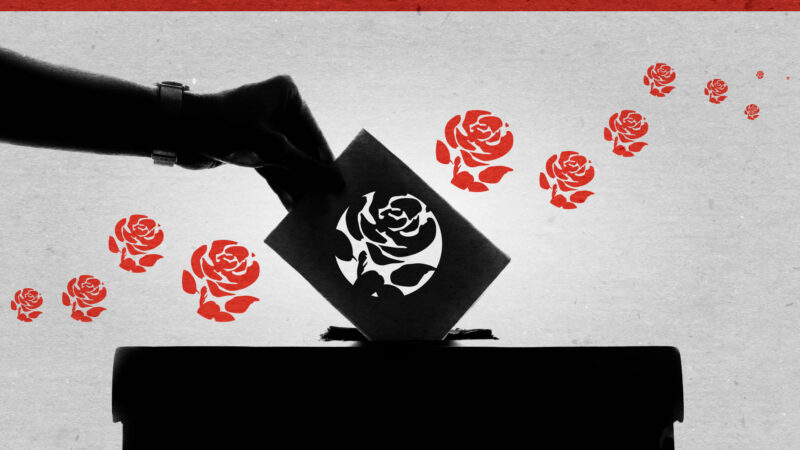
Nominations have closed in Labour’s national executive committee (NEC) elections. Check out our finalised nomination lists for the local party rep positions, BAME, disabled members, youth, Welsh and local government reps.
But what can we learn about this year’s NEC elections from the nominations of Constituency Labour Parties (CLPs)? The results give us an idea of what to expect from the elections themselves, as in previous years, nominations have been a reliable indicator of the final vote. With nine positions up for grabs, the local party rep nominations offer the best insight into how the elections may play out.
This year, 44 candidates were nominated for the local party rep roles, a significant drop on the last NEC elections in 2020, when 66 candidates received nominations. Of the 44, 21 candidates achieved the required five CLP nominations to secure a place on the ballot.
In terms of individual candidates, NEC incumbent Ann Black received the most nominations: 207. There were also strong results for other serving members of the NEC, including Johanna Baxter (194), Yasmine Dar (176), Gurinder Singh Josan (171) and Gemma Bolton (164), as well as for Jess Barnard (165), the current Young Labour chair, suggesting name recognition played a role. Current NEC members Mish Rahman (155) and Luke Akehurst (152) respectively received the fewest and second-fewest CLP nominations on their slates.
Of the 21 candidates who secured a place on the ballot, 14 were on one of the slates – and those slates accounted for approximately 95% of nominations.
- Labour to Win (the group that brought together Labour First and Progressive Britain in 2020 in support of Keir Starmer) backed five candidates: Luke Akehurst, Johanna Baxter, Abdi Duale , Gurinder Singh Josan and Jane Thomas. They received almost 41% of the nominations.
- Most organisations within the Centre-Left Grassroots Alliance (an umbrella group of left organisations including Momentum) backed four candidates: Jess Barnard, Gemma Bolton, Yasmine Dar and Mish Rahman. This group of candidates received almost 34% of the nominations.
- In addition to the four candidates above, some other groups within the CLGA such as Jewish Voice for Labour, Grassroots Black Left and Red Labour backed three further candidates: Maryam Eslamdoust, Deborah Hobson and Naomi Wimborne-Idrissi. They took just 8% of the nominations overall. However, Wimborne-Idrissi secured the 11th most nominations.
- Soft-left group Open Labour backed two candidates: Ann Black and Katherine Foy. They received 12% of the vote, though as noted above, Black was the most nominated of all candidates on 207.
While Labour to Win won a higher total of nominations across its candidates, the average vote per candidate was lower (161) than the first four left candidates (165). The nominations per candidate for this left group also had a smaller range (between 155 and 176) than those on the Labour to Win slate (from 136 to 194), perhaps demonstrating the benefits of backing fewer candidates.
It is still a significant shift towards the Labour to Win slate compared to the last time these positions were contested. In 2020, the left-wing slate took 42% of nominations, while Labour to Win received 24%. Open Labour made minimal gains on 2020, moving from 11% of nominations to 12%.
It is worth noting that neither the Labour Left Alliance nor the Tribune Group of MPs stood candidates this year, unlike 2020, where combined they took 12% of the vote. But even if all of that 12% had swung to Labour to Win (which is obviously unlikely), it would not account for the increase in their vote share.
As such, the results suggest a notable swing towards the pro-Starmer wing of the party, though perhaps less significant than initially expected. The Labour to Win slate was far more active on social media in sharing the nominations they had received, meaning at times during the nomination process they appeared to be further ahead than they are on final count.
That being said, though the pro-Starmer Labour to Win slate received the largest proportion of nominations as a single group, the two left-wing groupings combined received a marginally higher share. Labour to Win achieved just shy of 41% of the vote, while put together the seven candidates backed by left-wing groups within Labour’s broad church received almost 42% of nominations.




More from LabourList
‘Hope starts young: Why Labour must tell the story of a better tomorrow’
LGBT+ Labour suspends AGM amid fears of legal action over trans candidates running for women’s roles
‘Hyperlocal messaging can help Labour win elections: Here’s how’